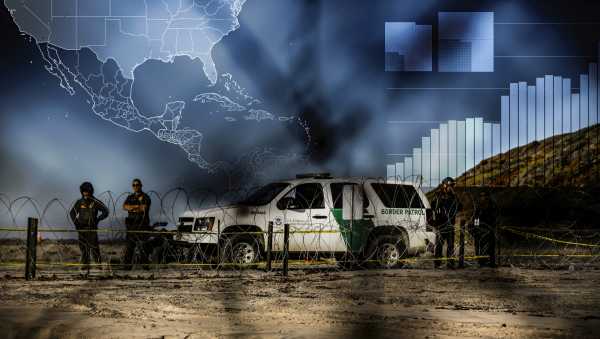
By the numbers: how 2 years of Trump’s policies have affected immigrants
The people directly harmed can be counted. The indirect effects can’t be.
By
Dara Lind and Javier Zarracina
Jan 19, 2019, 10:00am EST
Share
Tweet
Share
Share
By the numbers: how 2 years of Trump’s policies have affected immigrants
tweet
share
In two years as president, Donald Trump has done more to crack down on immigrants — both those seeking to come and those already here — than most presidents have done in four or eight.
Trump’s bombastic rhetoric on immigration and his stubborn insistence on building barriers along the US-Mexico border has distinguished him from his predecessors and led to a political realignment.
But the Trump administration’s impact on immigrants’ lives goes far beyond rhetoric and political fights.
Under Trump, the departments of Homeland Security (which oversees Customs and Border Protection and Immigration and Customs Enforcement), Justice, and State have all taken steps to reduce the number of immigrants coming to the US — and make the lives of those who are already here more precarious.
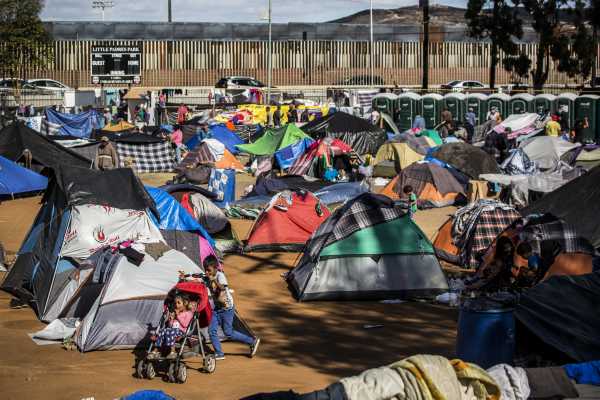
Refugee admissions have plummeted, while rejections of asylum applications have increased. Arrests of immigrants without criminal records have returned to the levels of the first term of the Obama administration, while Trump works to make hundreds of thousands more immigrants vulnerable to deportation, by stripping them of protections under the Deferred Action for Childhood Arrivals program or Temporary Protected Status. And the travel ban quietly churns on.
Join the Vox Video Lab
Go behind the scenes. Chat with creators. Support Vox video. Become a member of the Vox Video Lab on YouTube today. (Heads up: You might be asked to sign in to Google first.)
We can’t do a full accounting of the lives that have been touched by Trump’s immigration crackdown. But here’s an attempt to start.
Enforcement: Immigration arrests per day have soared since 2016
“If you’re here illegally,” Trump’s first head of ICE, Tom Homan, told Congress in 2017, “you should be afraid.”
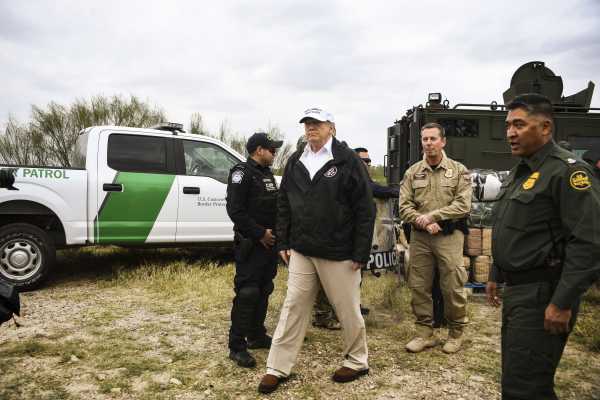
The Trump administration hasn’t engaged in the mass deportations Trump recklessly promised as a presidential candidate. It’s still working to reverse the de-escalation of the last two years of the Obama administration, and return to the “deporter-in-chief” levels of President Obama’s first term. But its policy of arresting and detaining as many unauthorized immigrants as possible is making its mark. Any way you slice it, more immigrants are more at risk than they were the day before Trump arrived.
- 436: The average number of daily immigration arrests under Trump between February 2017 and September 2018, including immigrants with and without criminal records, up from 300 in 2016, according to ICE statistics. Of that 436, an average of 139 arrests were of immigrants without criminal records, up from 47 in 2016.
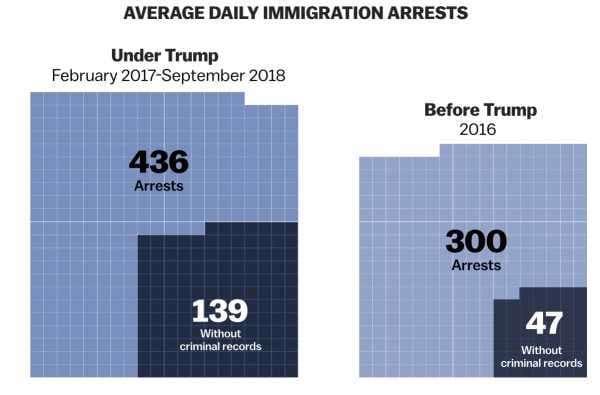
- 44,631: The average daily population of people in ICE custody, as of October 20, an apparent record. It’s also about 4,000 more people than Congress has authorized ICE to keep at a time under current funding levels. That’s up from 34,376 in fiscal year 2016 (October 2015-September 2016), the pre-Trump record for detention.
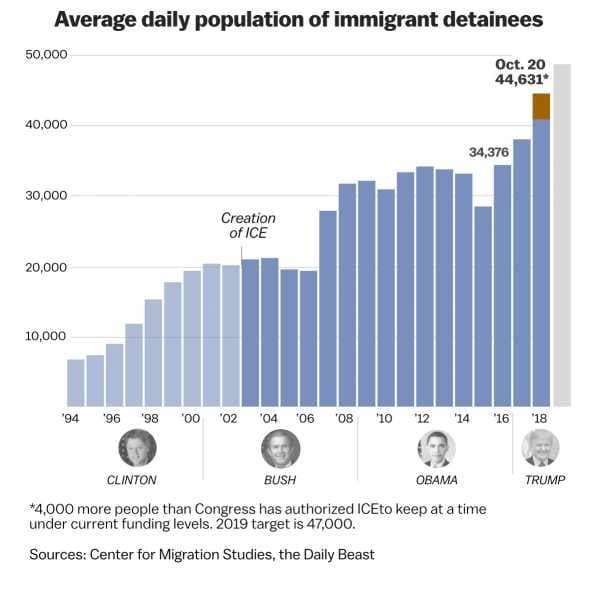
- 2,737: The official count of children separated from their families under the Trump administration’s “zero tolerance” policy, who were in government custody as of July 2018. Of that number, 131 were still in government custody as of December 12. An unknown number of children — possibly thousands — were separated from their parents but released to a sponsor (or otherwise released from custody) before July.
- 14,056: The number of unaccompanied minors in government custody as of November 16, a record. In 2016, the monthly average topped out at 9,000. The change isn’t due to family separation — the explosion in the number of children in custody came after the government stopped separating families as a matter of practice — but the increased time that children are being kept in custody before being placed with sponsors.
- 59: the average length of stay in custody for an unaccompanied minor before being placed with a sponsor as of September 14. In 2016, the average was 35 days. The Department of Health and Human Services has made several policy changes that both make officials less likely to release children quickly to sponsors, and put unauthorized-immigrant relatives at risk of deportation if they step forward to sponsor a child.
DACA: Hundreds of thousands of immigrants could have their protections stripped away
America has never had a generation of unauthorized immigrants as socially integrated into the nation as the immigrants protected by the Deferred Action for Childhood Arrivals (DACA) program, instituted by Obama in 2012 to protect people who’d come to the US as children from deportation and allow them to work legally in the US.
Trump is seeking to strip them of those protections, putting families and communities in limbo. Trump’s third year could see the end of DACA, as the Supreme Court is widely expected to take up a lawsuit over Trump’s actions and to side with the president. The question for Congress and the executive branch will be what happens next.
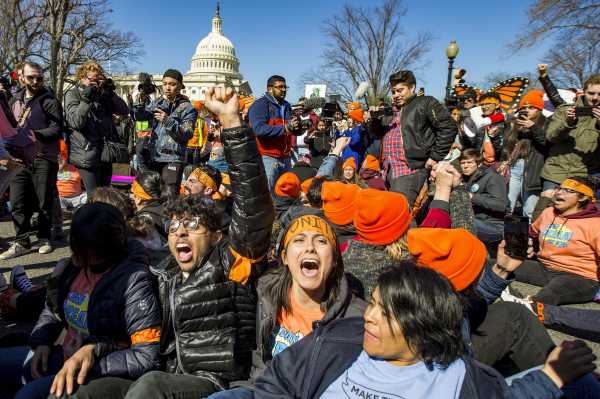
- 699,350: People with temporary protection from deportation under the Deferred Action for Childhood Arrivals (DACA) program, as of August 31, 2018, whose protections and work permits depend on the outcome of a court battle expected to arrive at the Supreme Court in spring 2019. The Trump administration attempted to sunset DACA in fall 2017, which would have resulted in several hundred thousand people losing legal protections by the end of 2018, but was stopped by court rulings in January 2018. (Source: USCIS.)
- 200,000: The estimated number of US citizen children with at least one “DACAmented” parent — a parent protected by the DACA program.
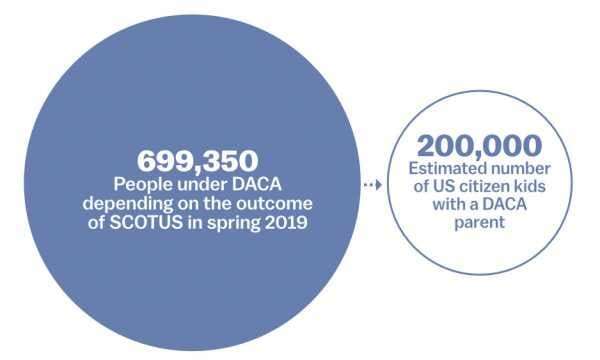
Temporary Protected Status: Trump is trying to strip protections from long-settled immigrants
“Temporary means temporary,” former Trump Homeland Security Secretary (and chief of staff) John Kelly used to say. And Temporary Protected Status, in theory, is supposed to be temporary too — a way to allow people whose home countries are suffering from war or natural disaster to stay safe and work in the US until the disaster has subsided.
But when Trump came into office, hundreds of thousands of immigrants had held TPS protections for years or decades, bought houses, and raised US citizen children. The Trump administration’s efforts to put the “Temporary” back in Temporary Protected Status have been put on hold by another lawsuit — but TPS holders’ precariousness and anxiety remain.
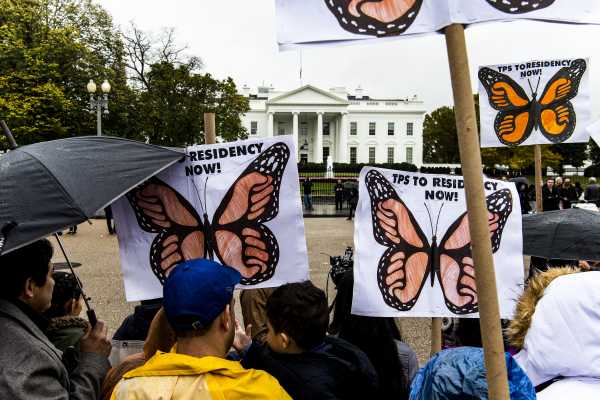
- 328,386: The number of immigrants whose legal status under the Temporary Protected Status program (TPS) is dependent on the outcome of an ongoing court case. The Trump administration has attempted to end TPS for people from Sudan, Nicaragua, El Salvador, and Haiti, but those decisions were put on hold by a federal judge in 2018.
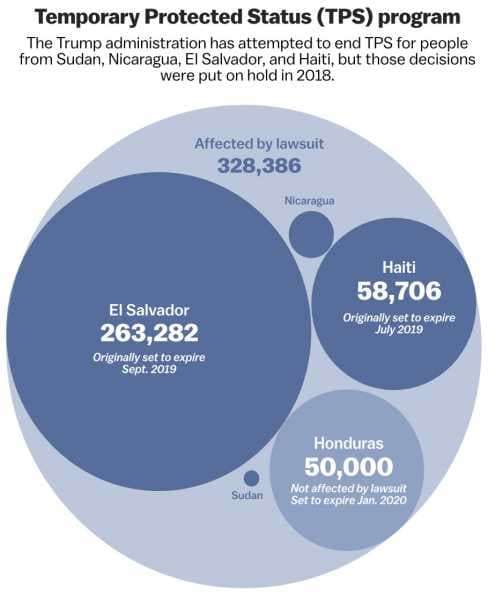
- 263,282: the number of TPS holders from El Salvador, all of whom have been in the US since March 2001 or earlier, originally set to lose their legal status in September 2019.
- 58,706: the number of TPS holders from Haiti, all of whom have been in the US since January 2011 or earlier, originally set to lose their legal status in July 2019.
- Approximately 57,000: the number of TPS holders from Honduras whose TPS is currently set to expire on January 5, 2020. Honduran TPS holders are not affected by the lawsuit. All have been living in the US since 1999.
- 273,000: estimated number of US citizen children with at least one parent with TPS from Honduras, El Salvador, or Haiti.
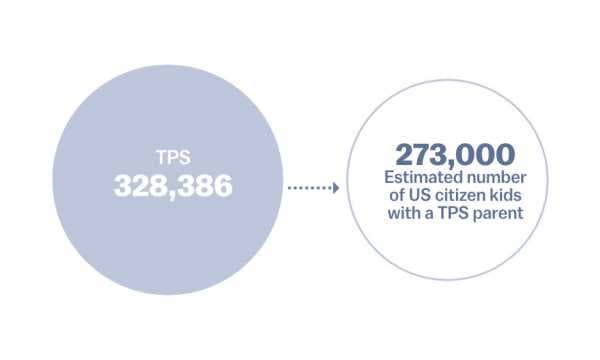
Legal immigration: Denials of visa applications are increasing
It’s hard to see the Trump administration’s impact on legal immigration to the United States, because you can’t see an absence.

Under Trump — the rare Republican who’s often expressed as much skepticism of legal immigration as unauthorized immigration — applications for visas or green cards have often been held up or denied under tighter standards, while rejected applications from immigrants currently in the US are now automatically referred to ICE for potential deportation.
Thanks to a 2018 Supreme Court decision, the administration continues to bar nearly all people from several (mostly Muslim-majority) countries from coming to the US. And the resettlement of refugees — something that America has been a global leader in for decades — has been all but dismantled, with official resettlement targets slashed to under half of 2016 levels and actual resettlements far below that.
- 620,311: Applications for green cards/visas/other legal immigrant status rejected in fiscal year 2018 (projected based on the first nine months), up 37 percent from fiscal year 2016.
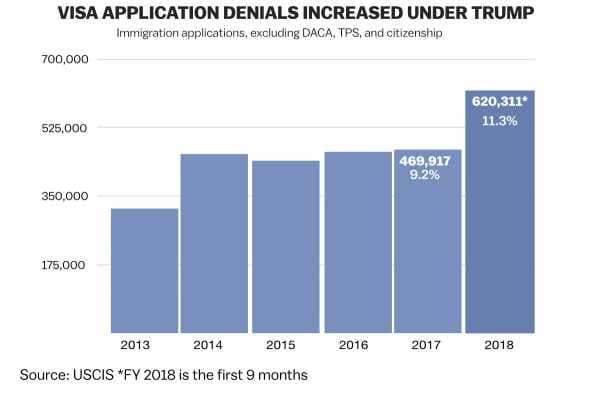
- 86 percent: Drop in immigrant visas given to people from countries covered by the Trump administration’s travel ban (which applies to applicants for immigrant visas from Iran, Libya, Sudan, Syria, and Yemen) from March-June 2017 (when the first version was on hold in court) to the same months of 2018, when the third version was fully in effect before being permanently upheld by the Supreme Court in June 2018. In theory, there are exceptions and waivers for the travel ban, but in practice those are rarely given — and the process is opaque and arguably arbitrary.
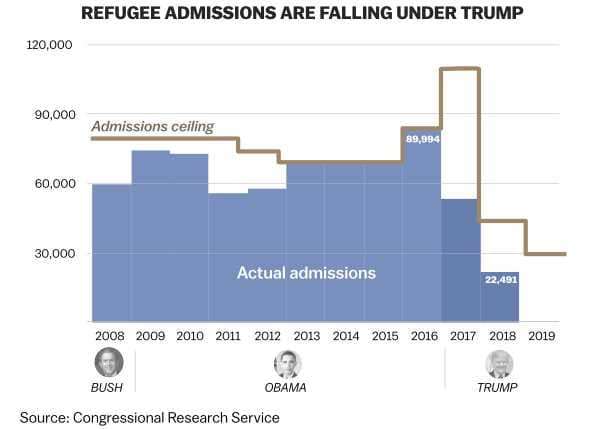
- 30,000: The maximum number of refugees the US is agreeing to settle in FY 2019.
- 22,491: The number of refugees resettled in the US in FY 2018 — not even half of the 44,000 cap the US set for the year.
- 73.5%: The drop in refugee resettlement from FY 2016 to FY 2018.
- 260,000: The number of refugees who had applied for resettlement in the US and were awaiting processing as of summer 2018, according to a US Department of State briefing with congressional officials.
Spreading fear: Latino immigrants feel they’re losing their place in America
Beyond each one of the immigrant lives counted here is a ripple effect of fear — to family members, community peers, or simply people who look like that person and wonder if they could be next. We’ll never be able to quantify the effects of the Trump administration on making immigrants (and Latinos, Asian-Americans, and Muslims who are citizens) feel more afraid and less American than they did before Donald Trump arrived in office. But it’s difficult to deny that they are.

- 55%: Hispanics who say they worry a lot or some that they, a family member or a close friend could be deported (up from 47 percent in January 2017).
78%: Share of Hispanics who are not citizens or legal permanent residents who worry (up from 67 percent in January 2017).
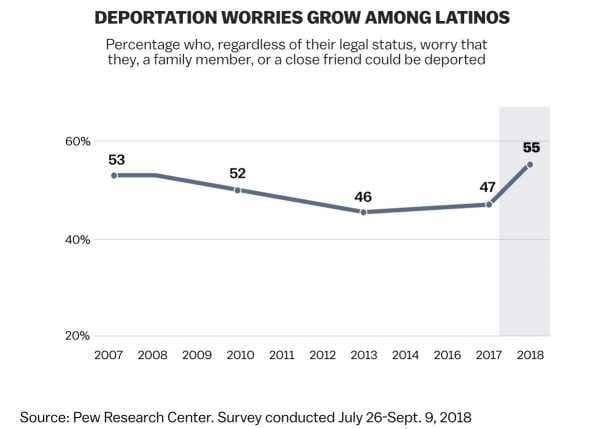
- 46%: Latinos who said they were confident in their place in America (down from 54 percent in January 2017).
- 49%: Latinos who said they had “serious concerns” about their place in America (up from 41 percent in January 2017).
- 24%: Latinos who reported being treated in a discriminatory way in last year.
- 22%: Latinos who were criticized for speaking Spanish in public in last year.
- 22%: Latinos told to go back to their home country in last year (including 25 percent of second-generation Latinos and 10 percent of third-or-later-generation Latinos).

Sourse: vox.com






